5 secrets of the Venus of Milo, which may not be Venus at All
Categories: History
By Pictolic https://pictolic.com/article/5-secrets-of-the-venus-of-milo-which-may-not-be-venus-at-all.htmlVenus of Milo was found on April 8, 1820. For two centuries now, this sculpture has been stirring the minds of historians, artists and art historians with its unsolved mysteries. The armless goddess from the Greek island of Milos has many mysteries. Moreover, their number is multiplying almost every year. We offer you 5 main secrets of the statue, which is considered the most mysterious in history.
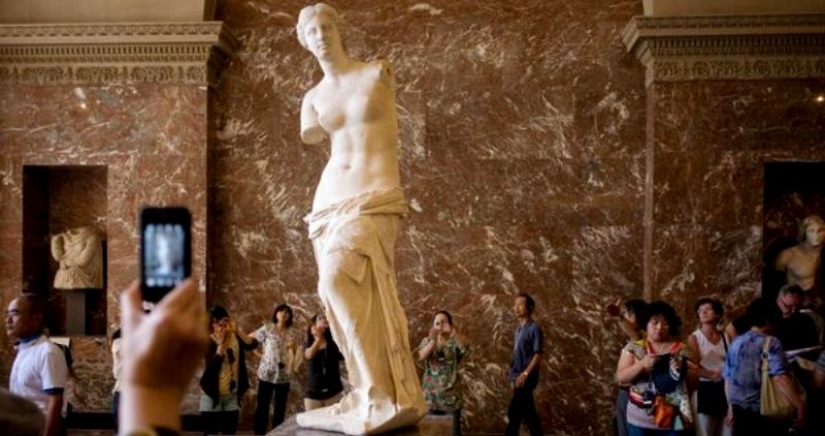
The ancient sculpture of wondrous beauty was discovered not by an archaeologist, but by an ordinary Greek peasant Yorgos Kendrotas. The artifact was hidden in a niche in the ruins of one of the buildings of the ancient city of Milos. The Greek informed the French officers quartered on the island about his discovery.
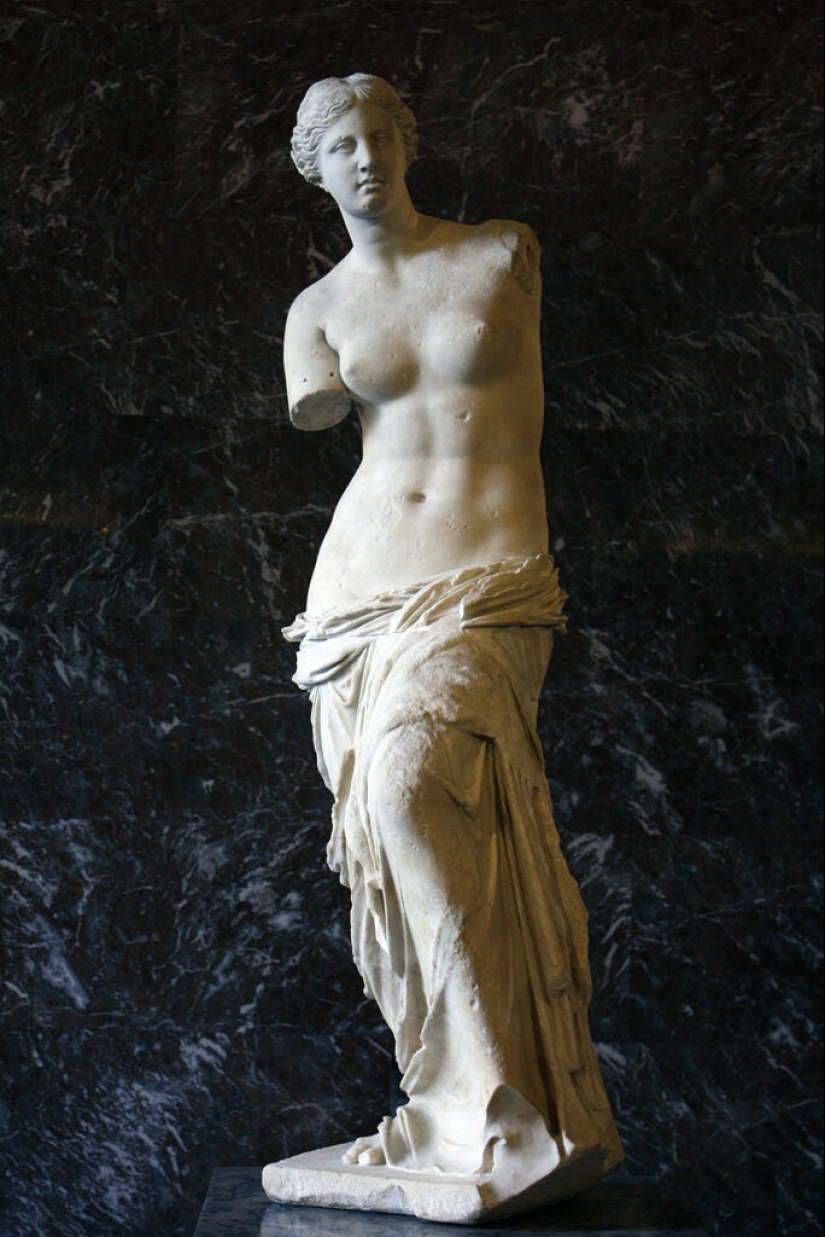
The military did not understand antiquities, but they were not averse to making extra money on their sale, So they sold the statue to Charles Francois Riviere, the French ambassador to Turkey. Riviere was kind enough to present the statue to King Louis XVIII, who placed it in the Louvre in 1821. The Venus de Milo is there to this day.
Surprisingly, we still don't know if Venus had hands when it was discovered. A lot of trustworthy people have seen the sculpture, and their stories are very contradictory. The classical version says that with the figure of a girl, divided into two parts, there was also a fragment of a hand - a brush holding an apple. Where the hand of Venus has gone, no one knows.
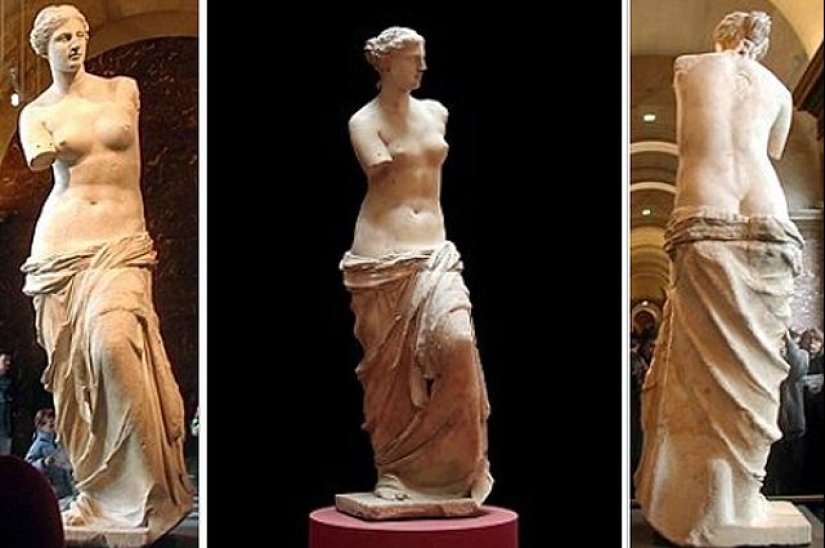
The famous French navigator Jules Dumont-Durville, who saw the sculpture one of the first, described it in his memoirs. The officer claimed that Venus had hands. The left one, raised up, held an apple, and the right one held the folds of the flowing fabric.
The Frenchman's story is doubtful. It was Dumont-Durville who brought the drawing of the statue to Constantinople to Ambassador Riviera and offered to buy it. In the drawing, Venus had both hands, but the statue was brought to the buyer without hands. When asked what happened, Captain Dumont-Durville told an adventure story worthy of Jules' pen True.
It turns out that when the French sailors were carrying the statue along the path to the sea to load it onto the ship, they were attacked. It is unclear who it was - whether Greek pirates, or Turkish janissaries. The brave French repulsed the attack, but at the same time repeatedly dropped the precious Venus, beating off her hands and nose. After the statue was on the ship, no one wanted to return to the inhospitable shore for the recaptured parts.
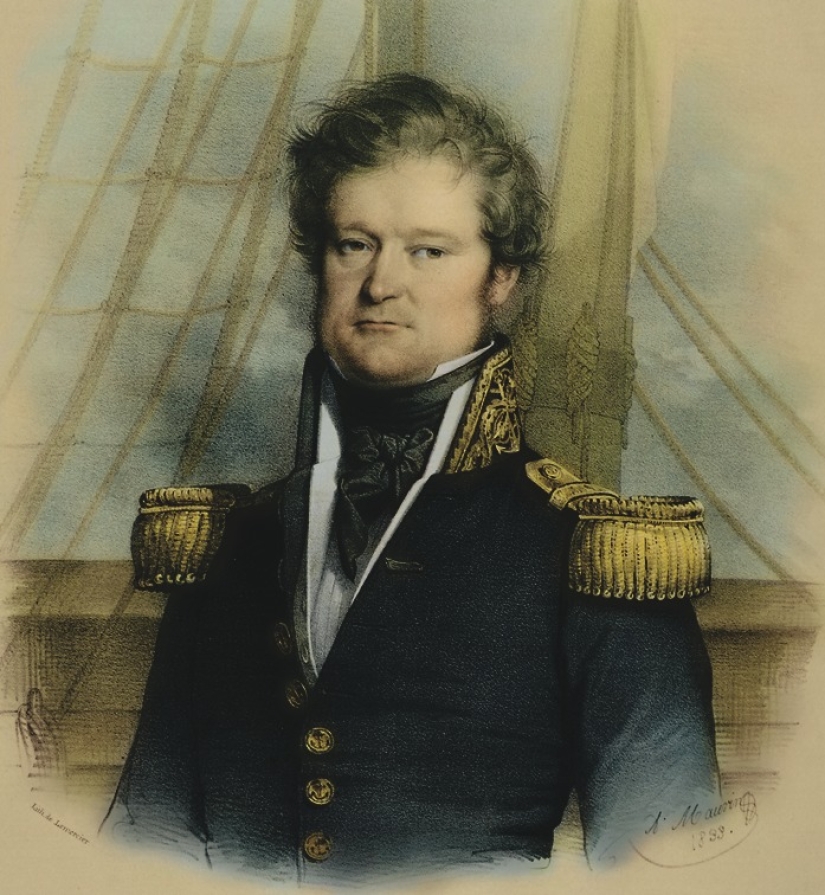
This is a wonderful example of adventure literature written by a seasoned sailor. But most researchers are sure that Dumont-Durville is just a liar. He got Venus without hands, and he drew it with hands in order to present it to the ambassador more profitably. The attack on the shore was invented by him to justify the non-marketable appearance of Venus.
It's funny, but no one knows exactly who the ancient sculptor wanted to portray. Now the work is described in the Louvre as the Venus of Milo - a sculpture of the Hellenistic era, created between 130 and 100 BC. So it has been recognized all over the world for two centuries.
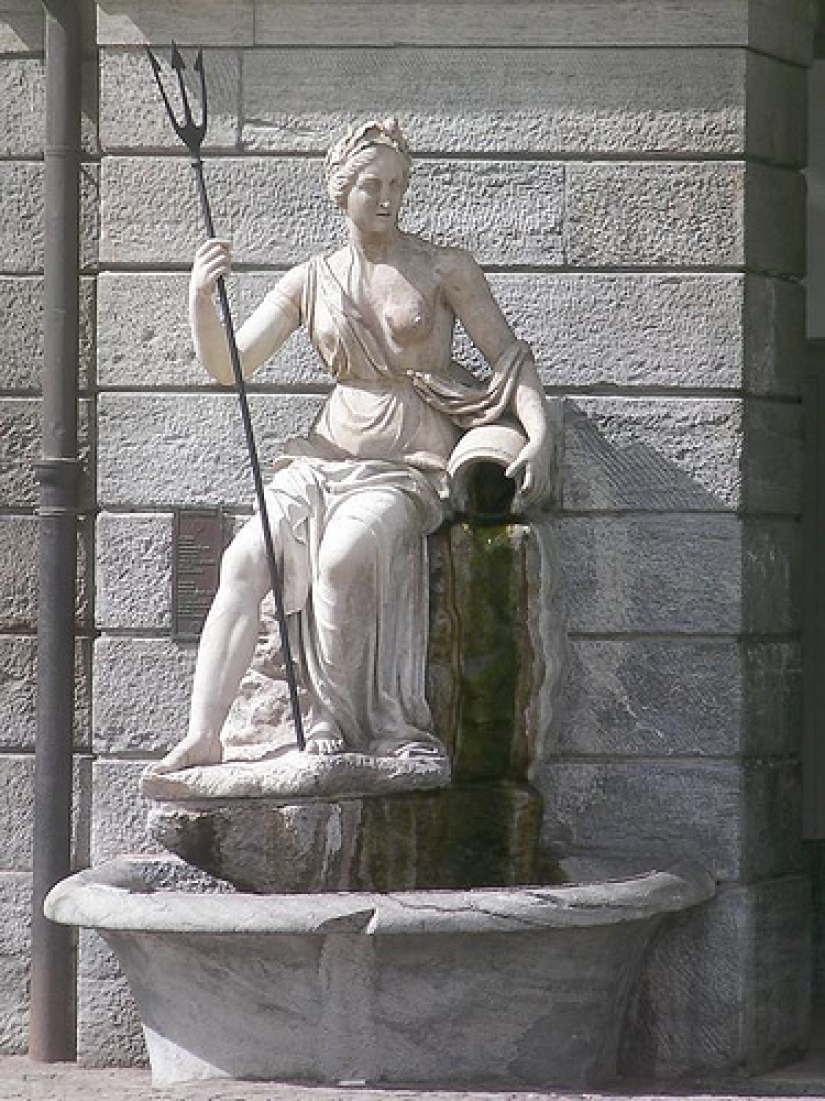
Why did everyone decide that the girl from white marble is Venus (Aphrodite)? This conclusion was made only because it is the goddess of beauty that is most often depicted partially or completely naked. There are no inscriptions on the sculpture, and there are also no attributes by which goddesses and gods are often identified.
There is an opinion that Venus is Artemis, and in her broken hand she clutched a bow. Also, some people claim that the ancient author depicted Danaida holding an amphora in her hand. But most often they insist that there was a trident in the hand, and the girl is none other than the sea goddess Amphitrite. The cult of the sea maiden, by the way, was very popular on Milos. If the figure represented Venus, then in her hand she was supposed to hold an apple of discord or a shield forged by the god Vulcan.
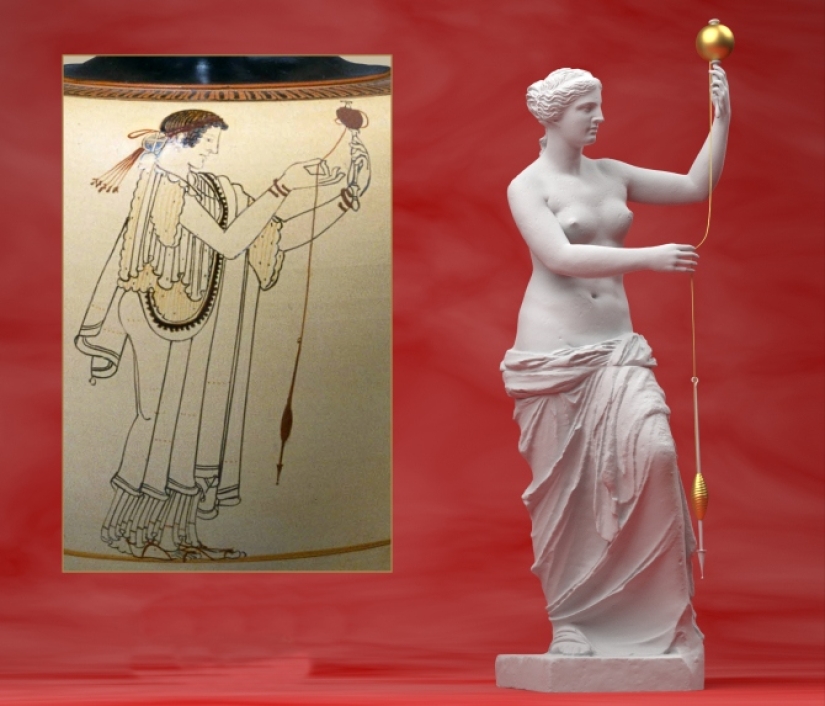
Venus of Milo surprisingly resembles another sculpture - Aphrodite of Cnidus, by Praxiteles. Therefore, for a long time this Greek, who lived in the 5th century BC, was considered the author of the statue. But then it was decided that it was created by Alexander of Antioch. Someone remembered that when the statue was found, it had a pedestal with the inscription: "Alexandros, son of Menides, a citizen of Antioch on the Meander, made this statue."
For a while, Alexander was considered the author, but then they doubted this. The fact is that the pedestal disappeared somewhere, and there was no reliable data about the signature. Now the Venus de Milo is officially listed as the work of an unknown master. Scientists decided that it would be fair. Maybe this is generally a high-quality ancient copy of someone's work – it was very fashionable to copy masterpieces in the 5th-4th centuries BC.
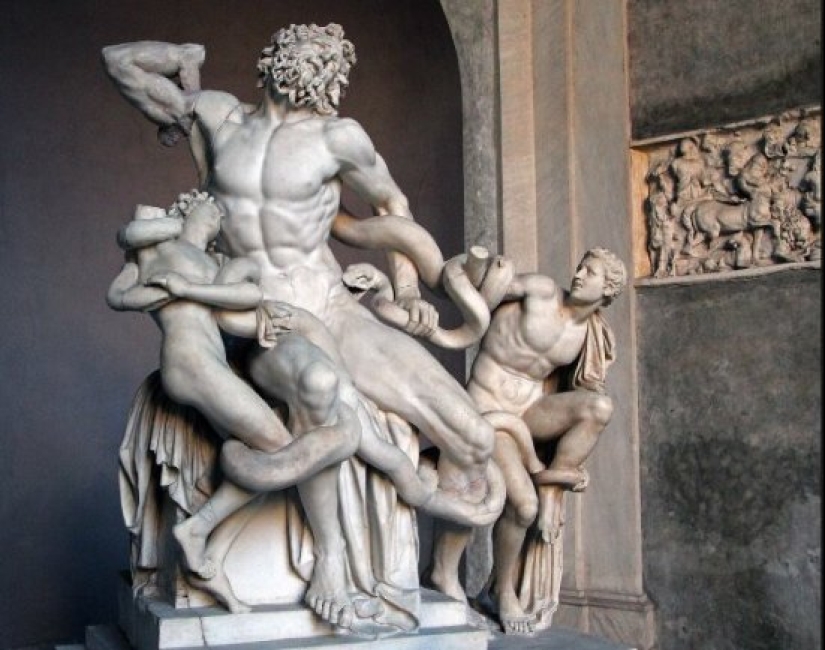
Collectors of antiquities also expressed their opinion. The famous collector of antiquities Claude Tarral once said that Venus is the fruit of the talent that lived in the 2-1 centuries BC, the sculptor Alexander of Rhodes. The most famous work of this master is the sculpture "Laocoon and his sons". The question of authorship remains open to this day.
Like many other Greek and Roman sculptures, the Venus de Milo was once painted. Traces of paint were found in the folds of her immodest attire. At the same time, experts say that although the remnants of the substance are barely visible now, it was once a very bright work.
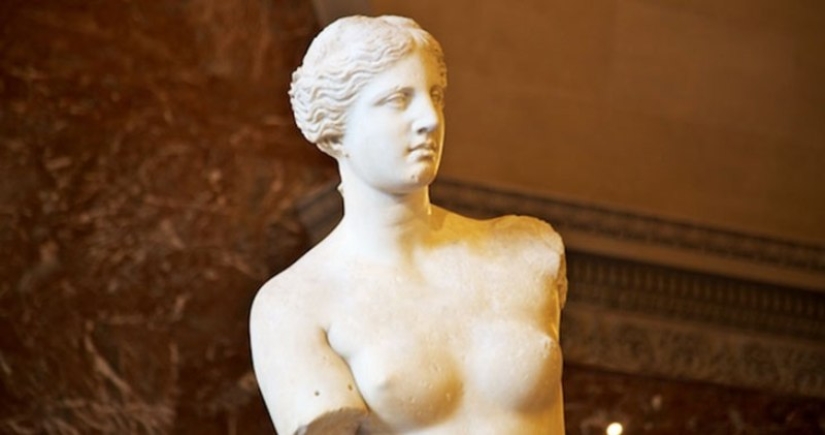
In addition, in the area of the shoulder of the right hand, Venus had a bracelet, most likely made of metal. On the part of the hand that has been preserved, the holes from the attachment of the accessory are clearly visible. The neck of the statue was decorated with a necklace - from it there were barely noticeable grooves on the marble. But that's not all. Most likely, the goddess had... earrings in her ears! The earlobes of Venus were beaten off in antiquity by some unscrupulous looters.
Even a person not too sophisticated in ancient art will notice that the Venus of Milo is not the most beautiful statue. At the same time, it is considered to be the standard of female beauty. The secret lies in the simple PR technologies of the early 19th century. In 1815, after the defeat of Napoleon, France gave Italy the Venus de' Medici stolen by the military.
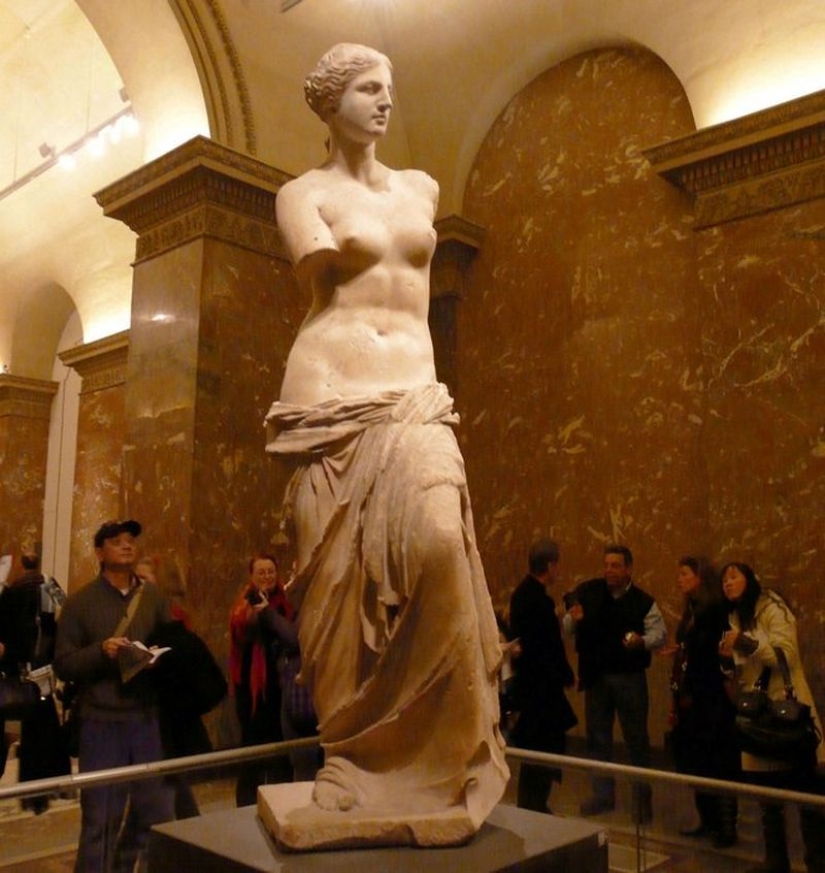
The French really wanted to have something classic, beautiful, and masterpiece at their disposal. As such an object, the goddess with broken arms, Venus of Milo, was chosen. It was exhibited at the Louvre on May 7, 1821 and an important event was made of the premiere. The ambassadors of Turkey, England and Holland were invited to the event at the museum. The presentation was furnished expensively and pompously.
Venus of Milo was supposed to be admired and it was carefully executed. The praises of sculpture were sung by artists, critics and art critics. However, there were critics who questioned its artistic value. For example, the famous artist Pierre Renoir found Venus ridiculous and described her as a "big gendarme". But the voices of skeptics were lost against the background of the praise chorus.
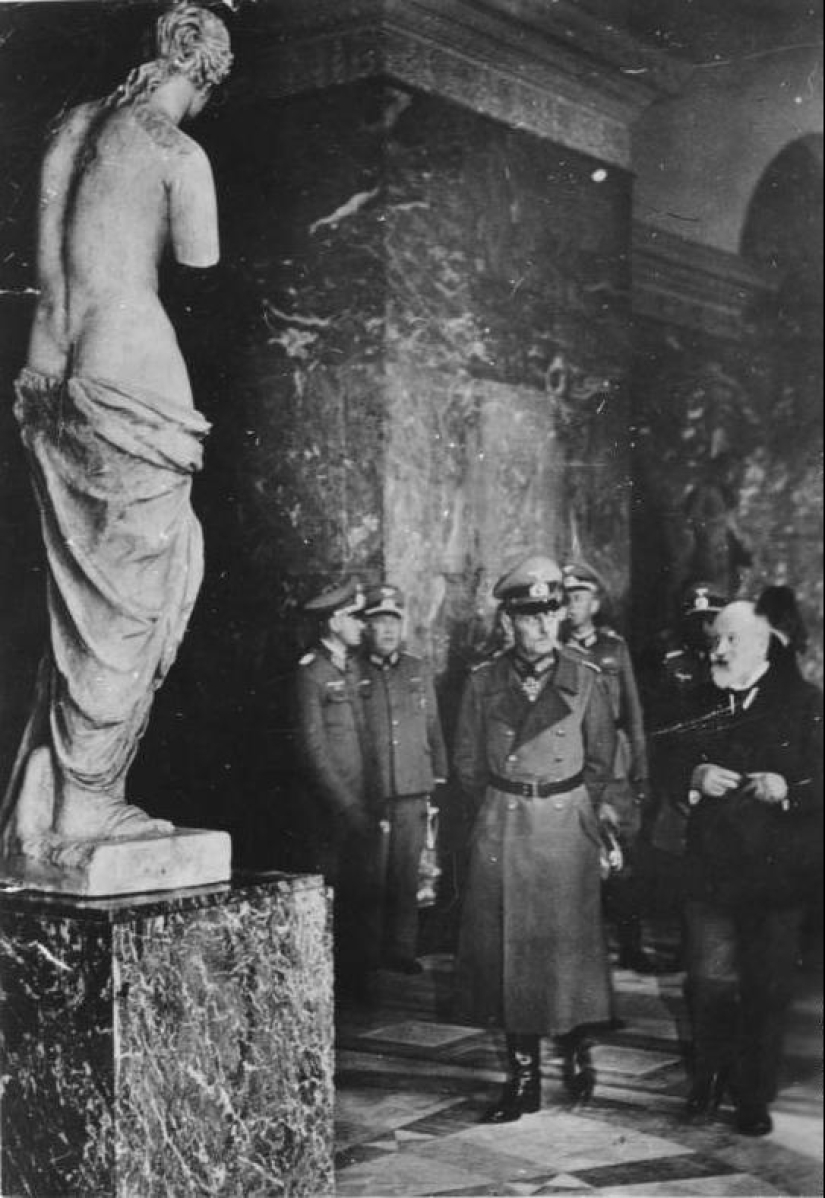
Armless Venus is still considered the most valuable asset of the French people. And in fact, it was simply stolen from the people of Greece by Dumont-Durville and his cronies. At the time of the discovery of the sculpture, there was no law in this country prohibiting the export of antiquities. The long-suffering land of Hellas was plundered by everyone.
Recent articles

Tatiana Gavrilova, better known by her creative pseudonym TanikoGa— is a Russian artist from Shlisselburg who loves cats and ...

Frida Kahlo advertising Mexico City, and Leonardo da Vinci — Florence? Let's fantasize about what advertising posters of ...

Ready to let out your wildest fantasies? View that creates American digital artist Konzhe Marcus (Marcus Conge), which connects the ...